7 Alternatives to Miro: The Best Online Collaboration Platforms for Teams
By Gregor K. published about 2023-01-08 13:26:55
Are you looking for alternatives to Miro, the visual collaboration platform? Whether you need a cheaper option, or a more powerful platform, this list of websites like Miro should have something to suit your needs. We'll be exploring the features, pricing and ease of use of each of these options, so you can find the best collaboration platform for your team.
Miro
Miro is an online whiteboarding platform that enables teams to collaborate visually in real-time. It provides a secure, online space where teams can brainstorm ideas, share documents, and create visuals that help them communicate better.
Features
- Secure online whiteboarding environment
- Real-time collaboration
- Brainstorming and ideation tools
- Document and image sharing
- Annotation and feedback tools
Table of Contents
- 1Introduction
- 2Miro Alternatives
-
3Head-to-Head Comparisons
- 3.1Miro vs Asana
- 3.2Miro vs Airtable
- 3.3Miro vs Jira
- 3.4Miro vs Website
- 3.5Miro vs Studio
- 3.6Miro vs Mural
- 3.7Miro vs Free
- 3.8Miro vs Scratch
- 3.9Miro vs Ombre
- 3.10Miro vs Jamboard
- 3.11Miro vs Enterprise
- 3.12Miro vs Canva
- 3.13Miro vs ClickUp
- 3.14Miro vs Canopy
- 3.15Miro vs Best Buy
- 3.16Miro vs Newegg
- 3.17Miro vs Amazon
- 3.18Miro vs Monday
- 3.19Miro vs Draw.io
- 3.20Miro vs Figma
- 4Miro History
- 5Miro Status
- 6Comments
- 7Further Links
Miro Alternatives
RealtimeBoard
Online collaboration and brainstorming tool, with support for video conferencing, document collaboration, and task management.
Realtime Board has a more user-friendly interface, with support for more advanced project management features such as Gantt charts and task lists.
Invision
Online collaboration and design tool, with support for prototyping and feedback gathering.
InVision is more focused on design and prototyping, while Miro is more focused on collaboration and brainstorming.
Mural
Online collaboration and brainstorming tool, with support for video conferencing and document collaboration.
Mural has a more intuitive and user-friendly interface, with support for more advanced visual collaboration and brainstorming features.
Airtable
Online collaboration and task management tool, with support for document collaboration.
Airtable is more focused on project management and data organization, while Miro is more focused on collaboration and brainstorming.
Slack
Online collaboration and communication tool, with support for document collaboration and task management.
Slack is more focused on communication and messaging, while Miro is more focused on collaboration and brainstorming.
Trello
Online collaboration and task management tool, with support for document collaboration.
Trello is more focused on task management and organization, while Miro is more focused on collaboration and brainstorming.
Notion
Online collaboration and task management tool, with support for document collaboration.
Notion is more focused on task management and document organization, while Miro is more focused on collaboration and brainstorming.
Asana
Both Miro and Asana are project management software tools used to organize and manage tasks.
Miro is focused on facilitating collaboration through visual storytelling, while Asana enables users to break down complex projects into smaller tasks.
Jira
Both Miro and Jira are collaborative, cloud-based platforms for project management.
Miro is focused on visual collaboration through whiteboarding and ideation, while Jira is focused on tracking tasks and managing software development projects.
Website
Both Miro and Website are web-based tools.
Miro is a collaboration tool, while Website is a platform for creating websites.
Studio
Both Miro and Studio are tools for digital collaboration.
Miro is primarily a virtual whiteboard, while Studio is an online video platform.
Free
Both websites offer free online collaboration tools.
Miro offers a suite of virtual whiteboard tools while Free is more focused on cloud storage and document sharing.
Scratch
Both Miro and Scratch are digital platforms used to create interactive visuals.
While Miro is mainly used by teams in a professional setting, Scratch is geared toward teaching children coding fundamentals.
Ombre
Both websites provide collaborative online whiteboards for teams to brainstorm and collaborate.
Miro is a comprehensive digital workspace that includes tools for agile project management, while Ombre focuses solely on whiteboarding.
Miro Head-To-Head
Miro is an online collaborative whiteboard platform which allows teams to collaborate in real-time on any project with ease. It is one of the most popular virtual whiteboards available and is used by large corporations, universities, and even small businesses. In this head-to-head comparison, we will be looking at the features of Miro compared to other websites offering similar services, such as Lucidchart, Trello, Aha!, Cacoo and RealtimeBoard. We will look at each website's features and compare them side-by-side so you can decide which one best suits your needs.
Miro and Asana are both powerful project management and collaboration tools that enable teams to collaborate more effectively. Miro is a visual collaboration platform with features such as whiteboarding, brainstorming, wireframing, task tracking, and real-time collaboration. It can be used to create high fidelity designs and prototypes quickly and easily. Asana is an online team collaboration platform with a focus on task management. It provides users with a range of features such as project timelines, task lists, calendar views, task dependencies, comment threads, notifications and integrations with other popular tools. Miro offers more visual elements than Asana such as the ability to draw on the canvas in addition to assigning tasks to teammates. However, Asana is better for managing complex projects with its sophisticated project timelines and task dependencies features. Both allow for file sharing between users but Miro allows you to directly embed images from sources like Google Drive or Dropbox while Asana requires you to upload files first before adding them into tasks or conversations. In terms of user interface, Miro has a modern design that makes it easy for users to navigate while Asana has a more traditional look which some may find easier to use over time.
Miro and Airtable are both cloud-based collaboration tools that are designed to help teams work together more efficiently. Both tools provide a range of features for managing projects, tasks, communication, and data. Miro is a digital whiteboard platform that enables teams to brainstorm ideas, collaborate in real-time, and visually organize their projects. It offers a range of templates and boards to get you started quickly as well as an extensive library of shapes, images, text boxes, sticky notes, and other elements that you can use to create your own custom boards. It also provides various integrations with popular apps like Slack and G Suite. Airtable is an all-in-one collaboration tool that helps teams manage their workflows from start to finish. It includes features such as task management, calendar views, record creation and editing tools, file sharing capabilities, commenting threads for discussions, automation rules for triggering actions based on events or data changes in your records, dashboards for visualizing data, API access to connect with external systems or services etc. With its API access feature Airtable allows users to build custom workflows tailored to their specific needs.
Miro and Jira are both online collaboration tools designed to streamline teamwork and project management. Miro is focused on creative projects, with its main feature being an infinite digital canvas where teams can brainstorm, create visuals, plan projects, and collaborate in real-time. It also offers other features like video conferencing, whiteboarding, task management, and file sharing. Jira is a project management tool designed for software development teams. Its main feature is its issue tracking system that allows teams to break down tasks into smaller subtasks and track progress via reports. It also includes features such as agile planning boards, customizable dashboards, automated workflows, and time tracking capabilities.
Miro and Website are both website building platforms that offer a range of features for creating custom websites. Miro is an all-in-one platform with a drag & drop builder, templates, hosting, and ecommerce capabilities. It also provides analytics to track website performance and can be integrated with third party applications. Website has a customizable design platform, allowing users to create unique designs quickly and easily. It provides support for user management, web forms, custom domains, content publishing tools, and more. Additionally, Website offers unlimited storage space, automatic backups, built-in SEO optimization tools, mobile optimization, and more. Both platforms provide powerful features to help businesses create websites tailored to their needs.
Miro and Studio are two highly-rated visual collaboration platforms that allow teams to collaborate on projects and ideas in real-time. Miro is a whiteboard tool that allows users to design, brainstorm, plan, collaborate, and present without boundaries. It includes features like real-time voting, timeline planning, image annotation, and file sharing. Studio enables users to create interactive experiences with an easy drag-and-drop interface. With its library of templates, custom designs, and creative tools like content libraries and animation effects, users can quickly create engaging visuals for their audiences. Both platforms also offer integrated video conferencing capabilities so teams can work remotely together.
Miro and Mural are both online collaboration tools that enable remote teams to work together in a digital environment. Both platforms allow users to conduct brainstorming sessions, share ideas, create visuals, and manage projects. However, there are some key differences between the two platforms. Miro is more of a real-time whiteboarding tool that allows users to collaborate on visuals in a virtual workspace. It enables teams to communicate and participate in various activities such as mind mapping, storyboarding, building customer journey maps, and diagramming. Miro provides an extensive library of templates and other resources for users to access. It also supports activities like voting, post-it note creation, file sharing and annotation. Mural is an online workspace that helps teams ideate, plan, organize their work visually by creating project boards with sticky notes or cards. It offers features such as visual analytics which can help keep track of progress in a project or group tasks. Additionally, Mural has an AI powered assistant âKonradâ which can help facilitate conversations between team members by suggesting topics based on user feedback. The platform also provides collaborative templates for different types of projects such as product design sprints or marketing campaigns.
Miro and Free are both online collaboration and whiteboarding tools, but they have some key differences. Miro offers a large selection of features that include real-time collaboration, an extensive library of templates, asset management capabilities, and an open API. It also has a robust set of integrations with popular products such as Jira, Slack, Dropbox, Google Drive, and more. Free offers basic whiteboarding capabilities with the ability to create boards and share them with others in real-time. Additionally, users can add background images to their boards or import existing ones from image files. Free also allows for the addition of text boxes, shapes, arrows, and other objects to the board as well as text formatting options. The main difference between the two is that Miro provides more advanced features for team collaboration while Free is limited to basic whiteboarding functions.
Miro and Scratch are both collaboration platforms that are designed to help teams with project management. Miro is an all-in-one collaborative whiteboard platform that offers features like real-time collaboration, boards for brainstorming, task tracking, and more. It also has integrations with other applications like Slack, Jira, and Google Drive. Scratch is a free programming language and online community where users can create interactive stories, games, and animations. It has a drag-and-drop interface so users can easily create projects without having to write any code. It also includes features such as sharing projects with others, commenting on projects, and collaborating in real time. Overall, Miro is better suited for businesses who need an organizational tool for brainstorming and task management while Scratch is better for creative tasks such as creating stories or animations.
Miro and Ombre are collaboration tools that provide teams with the ability to work together in real-time on content, projects, and tasks. Miro is an online whiteboard platform that allows users to brainstorm, plan projects, and collaborate visually on digital canvases with its range of templates, shapes, icons, images and more. Ombre is a communication platform for teams which stores documents, conversations, tasks and more in one place. It provides customised workspaces for different projects or topics where members can share files, have discussions and track tasks. Miro offers features such as an interactive whiteboard where users can draw diagrams, add comments and notes to ideas in real-time without any coding experience required. It also offers virtual sticky notes which allow users to quickly jot down ideas or leave comments on various topics without taking up space on the page. Ombre provides features such as customizable workspaces tailored towards specific projects or topics which makes it easier for teams to collaborate effectively. It also includes task management capabilities that allow team members to assign tasks to each other and track progress easily.
Miro and Jamboard are both online collaboration tools that help teams work together in real-time. Both platforms allow users to create documents, assign tasks, and comment on documents. When it comes to features, Miro has a greater range of options than Jamboard. It allows users to brainstorm ideas with virtual sticky notes, upload and attach files, track progress with automated workflows, and integrate with more than 100+ third-party applications. Additionally, Miro's whiteboarding platform supports a variety of shapes and sizes for collaborative diagrams, mind maps, flowcharts, etc. Jamboard's main feature is its digital whiteboard which allows teams to collaborate on projects from anywhere with an internet connection. Users can create simple sketches or complex diagrams as well as share photos and videos directly from the board. Jamboard also includes Google AI capabilities such as Smart Reply for responding quickly to questions as well as AI-based suggestions for drawing shapes. Additionally, Jamboard has integration with other G Suite Apps like Docs & Slides.
Miro and Enterprise are both cloud-based collaboration tools designed to help teams work together more effectively. Miro is a visual collaboration platform that helps teams create, brainstorm, plan, and collaborate remotely and in real-time. It provides intuitive tools for creating interactive visuals such as mind maps, storyboards and flowcharts. Enterprise is an online project management platform that offers workflow automation, task management, document storage and team communication features. It lets users create project plans, assign tasks to team members, track progress and deadlines, store documents securely and collaborate with each other. Both platforms are highly customizable with different user roles and access levels. However, Miro focuses on visual collaboration while Enterprise focuses more on project management features such as reporting, task tracking and document storage.
Miro and Canva are both online graphic design tools that offer users the ability to create visually-appealing designs for a variety of purposes, such as presentations, webpages, posters, logos, and more. Both tools offer a wide range of features and capabilities, but they differ in how they approach design elements. Miro is focused on collaboration, providing an interactive visual workspace where teams can create together. It offers drag-and-drop widgets that make it easy to add images, charts, text boxes, and other elements to the canvas. It also has built-in collaboration features like chat windows and an activity feed that allows teams to communicate while working. Canva is more focused on the creative aspect of design. It provides a large selection of templates and pre-built designs that users can customize with their own photos or illustrations. It also offers a library of fonts and elements such as shapes and icons which can be used in designs. In addition, Canva also has an AI-powered tool called Magic Resize which automatically resizes designs for different platforms with just one click.
Miro and ClickUp are both cloud-based collaborative software solutions for businesses. Both platforms offer capabilities such as task management, project planning, remote team collaboration, and visual collaboration. Miro offers a virtual whiteboard that enables teams to brainstorm ideas, create prototypes, and visually collaborate on projects. It also has a library of templates that can be used to quickly start projects. Additionally, it includes features such as file sharing and document annotation. ClickUp is a powerful task management system that allows users to organize tasks into lists, assign tasks to team members, set deadlines, track progress, and collaborate with comments and chat. It also includes features such as time tracking, file attachments, subtasks, tags and custom fields. ClickUp also provides automation tools such as triggers and integrations with other apps.
Miro and Canopy are both tools designed to help teams collaborate and manage projects. Miro is a digital whiteboard platform that provides a visual space for brainstorming, project planning, communication, and collaboration. It allows users to add notes, drawings, sketches, diagrams, photos, videos and more to the boards. Canopy is a project management tool that helps teams plan, track progress and collaborate on tasks. It features Gantt charts to visualize project timelines as well as a task manager that enables managers to assign tasks to team members with due dates and other related details. Canopy also provides an internal chat feature as well as access control so users can choose who has viewing rights to certain projects. While Miro provides an interactive environment for collaboration in the form of virtual boards, Canopy offers more traditional project management tools such as Gantt charts and task tracking.
Miro and Best Buy are both websites that provide a wide range of products for users to purchase. Miro offers a variety of items such as electronics, home and kitchen appliances, furniture, and more. The website also provides helpful product reviews from customers to help users make informed decisions. Best Buy is an online store that sells electronic items such as phones, laptops, cameras, TVs, and more. In addition to providing product information and reviews, the website also has several different delivery options for customers and offers extended warranties on select items. Both websites have user-friendly features such as easy checkout processes and secure payment methods. However, Miro offers free shipping on all orders while Best Buy only offers free shipping on orders over a certain amount. Additionally, Miro allows users to track their orders throughout the delivery process while Best Buy does not offer this service.
Miro and Newegg are both websites that offer a variety of items for sale. Miro specializes in electronic goods, such as laptops, monitors, mobile phones and tablets, while Newegg offers a range of products including home appliances and office supplies. Both websites have user-friendly interfaces and offer secure payment methods. Miro allows customers to easily compare products by displaying detailed product specifications side-by-side. It also provides interactive tutorials to help users find the perfect product for their needs. In addition, Miro has an extensive customer service team available to answer any questions or concerns customers may have before purchasing a product. Newegg on the other hand focuses on providing customers with detailed product descriptions and reviews from verified customers to help users make an informed decision when making a purchase. Newegg also allows customers to compare prices across multiple sellers and offers exclusive deals not available elsewhere. Furthermore, Newegg has an extensive selection of refurbished items that can be purchased at discounted prices to save money.
Miro and Amazon are both online platforms that offer a variety of services. Miro is an online collaboration platform with features such as virtual whiteboards, real-time collaboration tools, and video conferencing. It also offers integration with third-party applications like Slack and Google Drive. Amazon is an ecommerce platform that provides a wide selection of products, from apparel to electronics to groceries. It has additionally expanded its services to include streaming media, cloud storage, web hosting, and more. Miro is ideal for businesses looking to increase their teamâs productivity through virtual collaboration tools. With its integration capabilities, users can keep all their projects in one place while collaborating in real time remotely. On the other hand, Amazon is an excellent choice for those looking to purchase goods online or host their website or digital media on the cloud. With its wide selection of items and services, Amazon sets itself apart from other ecommerce sites by offering customers convenience along with affordability.
Miro and Monday.com are both project management tools designed to help teams stay organized, collaborate, and visualize their progress. Miro is a virtual whiteboard and collaboration platform which allows users to brainstorm ideas, share documents, design flows and processes, take notes, assign tasks, track progress and get feedback in real-time. It also offers an array of templates for specific projects such as design sprints, marketing campaigns and product roadmaps. Monday.com is a comprehensive project management tool that helps teams stay on top of tasks via a customizable dashboard. It enables users to create checklists, set reminders and deadlines, assign tasks to team members, track progress of each task in detail with filters and custom fields as well as synchronize tasks across multiple projects. It also comes with collaboration features such as discussion boards and comment threads for team members to easily communicate with one another.
Miro and Draw.io are two collaborative diagramming and brainstorming tools designed to help teams work together more effectively. Both allow users to create diagrams, flowcharts, wireframes, mind maps, organizational charts, and more. Miro provides a wide variety of features such as an easy drag-and-drop interface for quickly creating diagrams; a real-time collaboration tool to let multiple team members work on the same project; the ability to embed videos, photos, documents, web pages and task lists; a library of templates for a variety of formats; and the ability to export diagrams in multiple file formats. Additionally, it offers integration with popular services like Dropbox and Google Drive. Draw.io is a browser-based diagramming tool that is free for personal use. It offers an intuitive user interface with drag-and-drop capabilities and allows users to collaborate in real time with comments and chat. It also has powerful editing tools such as snap lines, object alignment, text styles and object styling tools. It supports importing files from other services like Microsoft Visio, Gliffy or Lucidchart along with exporting them in various formats including SVG and PNG. Additionally it offers cloud storage support for Google Drive and OneDrive among others making it easier to access saved diagrams across different devices
Miro and Figma are two popular design platforms used for collaboration and prototyping. Both offer a wide range of features, but each has a slightly different approach to designing. Miro is a visual collaboration platform that focuses on creating whiteboarding experiences. It allows users to collaborate in real-time on interactive boards with a variety of tools such as sticky notes, checklists, drawing tools, templates, and more. It also provides an interactive timeline feature which helps teams track progress and manage projects. Figma is a vector-based design platform that allows teams to work together from anywhere. With Figma, users can create wireframes, mockups, animation prototypes and more. It also offers powerful collaboration capabilities with features such as version history, comment threads, tasks and more. Additionally, it provides integration with other popular software such as Sketch and Adobe XD. Overall, both Miro and Figma provide great options for effective online collaboration for designers. Ultimately the choice between them will depend on the specific needs of the team or individual user and their budget.
History of Miro
Miro is a web-based collaboration platform that was launched in 2011. It allows users to communicate and collaborate on projects through a variety of tools, such as video conferencing, whiteboard drawing, and task management. Miro has grown in popularity since its initial launch, and has become a popular choice for remote teams to work together on projects.
Miro Status
The Miro website on online and reachable (last checked on 2025-06-30 01:00:49).
Comments
-

-

-

Wow, I guess when it comes to Miro, imitation is the sincerest form of flattery!
2023-05-11 09:48:04 · -
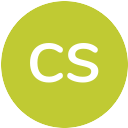
-
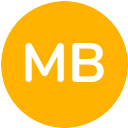
-

-
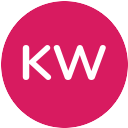
-
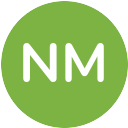
-
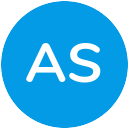
-

Further Links
Trending Sites
Top Sites in Remote Work
Miro
Miro is an online whiteboarding platform that enables teams to collaborate visually in real-time. It provides a secure, online space where teams can brainstorm ideas, share documents, and create visuals that help them communicate better.
Features
- Secure online whiteboarding environment
- Real-time collaboration
- Brainstorming and ideation tools
- Document and image sharing
- Annotation and feedback tools
Table of Contents
- 1Introduction
- 2Miro Alternatives
-
3Head-to-Head Comparisons
- 3.1Miro vs Asana
- 3.2Miro vs Airtable
- 3.3Miro vs Jira
- 3.4Miro vs Website
- 3.5Miro vs Studio
- 3.6Miro vs Mural
- 3.7Miro vs Free
- 3.8Miro vs Scratch
- 3.9Miro vs Ombre
- 3.10Miro vs Jamboard
- 3.11Miro vs Enterprise
- 3.12Miro vs Canva
- 3.13Miro vs ClickUp
- 3.14Miro vs Canopy
- 3.15Miro vs Best Buy
- 3.16Miro vs Newegg
- 3.17Miro vs Amazon
- 3.18Miro vs Monday
- 3.19Miro vs Draw.io
- 3.20Miro vs Figma
- 4Miro History
- 5Miro Status
- 6Comments
- 7Further Links
